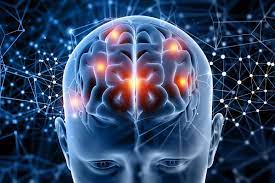デフォルト・モード・ネットワーク(DMN)という言葉がある。
DMNについてAIに聞いてみると、以下のような答えが返ってきた。
DMNは、認知的な自己関連プロセスや内省、未来の計画、メモリの処理などに関与しているとされています。活発な時には、個体が自己に焦点を当て、内なる思考や想像、過去や未来への思索が行われると考えられています。
The term Default Mode Network (DMN).
When I asked AI about the DMN, I got the following answer.
The default mode network (DMN) is one of the neural networks that represent part of the brain’s function. This network is active in static states and at rest.
The DMN is believed to be involved in cognitive self-related processes, introspection, future planning, and memory processing.
When active, it is believed that the individual focuses on the self, inner thoughts, imagination, and contemplation of the past and future.
A particularly noteworthy statement is the part that says “inner thoughts, imaginations, and speculations on the past and future take place.”
This is exactly what is meant by “delusion”. In other words, when the DMN is activated, the brain is in a delusional state.
The activation of the DMN is similar to the state in which the accelerator is depressed while the gear is in neutral, if we compare it to a car.
As a matter of course, the more you depress the accelerator pedal, the greater the load on the engine.
Thus, when the DMN is active, the brain is under load. In other words, delusion is a cause of brain fatigue.
Most of us humans default to delusion mode. In other words, we are unconsciously overloading our brains.
Incidentally, according to one research report, people who are more prone to delusion mode have a higher risk of developing Alzheimer’s dementia in the future. This may be evidence that delusion is damaging brain cells.
Getting out of delusion mode, even for a short time, will reduce the strain on the brain and lead to a healthier state.
The first step in this process is to realize that your brain is in delusion mode.
However, noticing does not mean that you have to forcibly eliminate the delusion.
This is because delusions often lose their power by the time we become aware of them.

